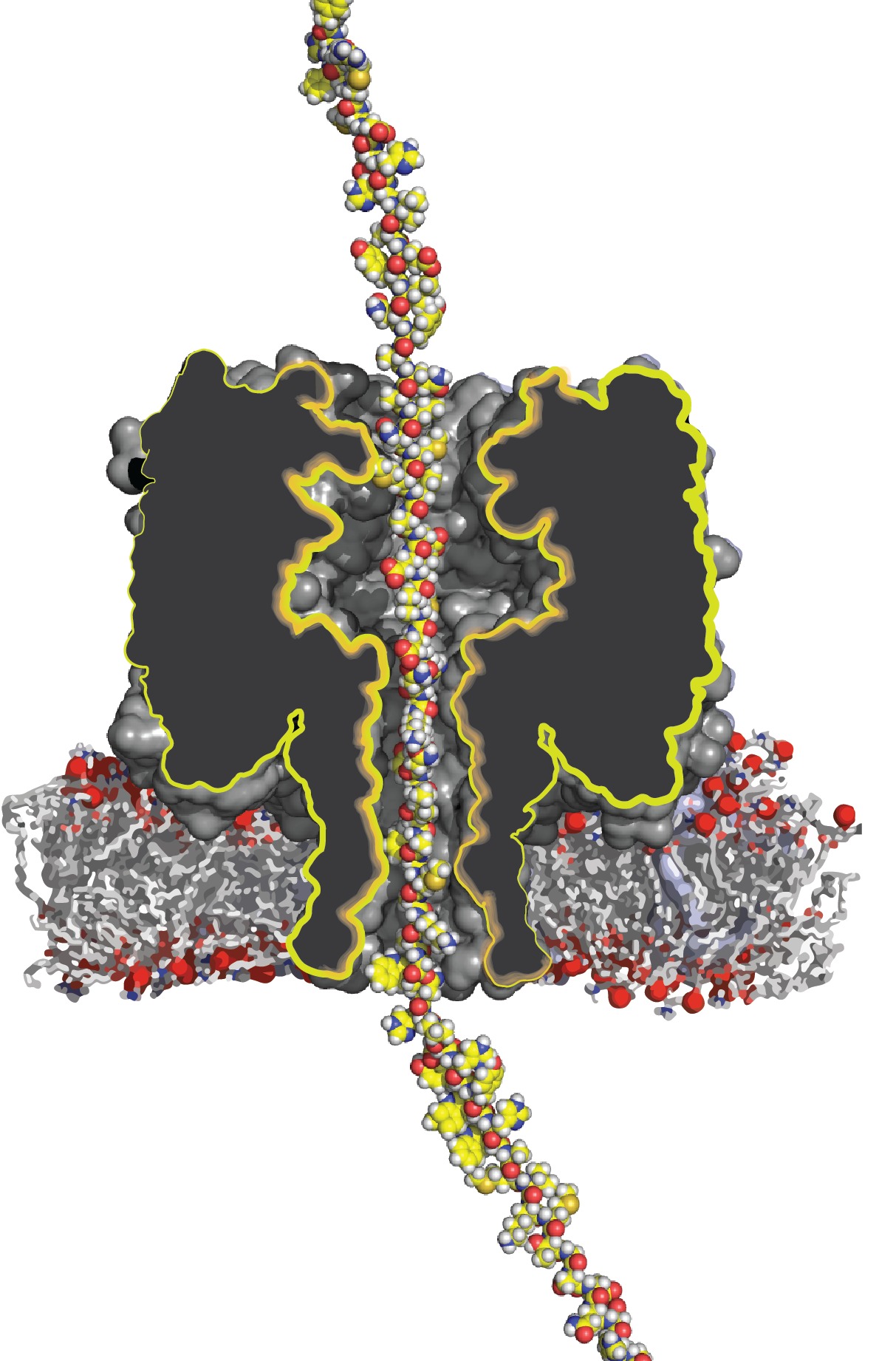De ontbrekende schakel die simpele eiwit sequencing mogelijk maakt?
Er is een ware race gaande onder weterschappers om technologie te ontwikkelen waarmee we gemakkelijk eiwitten kunnen sequencen. Professor Chemische Biologie Giovanni Maglia van de Rijksuniversiteit Groningen heeft nu het ontbrekende stukje van de puzzel gevonden: een manier om een eiwit door een nanoporie te transporteren, wat het sequencen van eiwitten met een simpel, handheld apparaat mogelijk maakt.
Science Newsroom | Charlotte Vlek
DNA sequencen heeft een revolutie gebracht in hoe we leven begrijpen, en het sequencen van eiwitten is de volgende heilige graal. Maglia legt uit: ‘DNA is grotendeels statisch. De processen in onze cellen worden uitgevoerd door eiwitten: zij doen het echte werk. En door eiwitten te begrijpen, hopen we nog beter te begrijpen hoe ons lichaam werkt.’
Waarom willen we eigenlijk eiwitten sequencen?
Het probleem van eiwitten door een gaatje trekken
Er zijn momenteel handheld apparaten op de markt die DNA kunnen sequencen. Deze apparaten maken gebruik van nanoporie-technologie: een enkele streng DNA wordt door een minuscuul gaatje (een nanoporie) in een membraan getrokken, en terwijl het er doorheen gaat worden de bouwstenen van het DNA ‘afgelezen’.

Er zijn al stappen genomen om dezelfde nanoporie-technologie op eiwitten toe te passen, maar het was nog niet mogelijk om het lange eiwit door zo’n klein gaatje te krijgen zoals dat bij DNA gebeurt. ‘Het is net gekookte spaghetti,’ legt Maglia uit. ‘Die lange strengen willen rommelig zijn, ze willen niet door dat kleine gaatje geduwd worden.’
Een enkele streng DNA is ook een beetje als gekookte spaghetti, maar dat kan met een elektrisch veld er doorheen getrokken worden, omdat het zelf ook elektrisch geladen is. Maar eiwitten hebben een zwakkere lading, en soms dragen ze positieve lading, en soms negatief. ‘Eiwitten verschillen van DNA,’ legt Maglia uit, ‘en dus moet de technologie ook aangepast worden.
Meegaan op de stroom
Om een eiwit door een nanoporie te transporteren, gebruikte Maglia een oplossing met elektrisch geladen deeltjes (ionen), die door de nanoporie getrokken kunnen worden met een elektrisch veld. Terwijl dat gebeurt, trekken ze het eiwit mee. Het was niet triviaal om dat werkend te krijgen, legt Maglia uit: ‘we wisten niet of de stroming sterk genoeg zou zijn. Bovendien willen die ionen beide kanten op bewegen, maar door een sterke lading aan de nanoporie zelf te geven, lukte het ons om een gerichte stroming te creëren.’
Maglia bouwde een systeem met de sterkst mogelijke stroom zonder eiwitten. Samen met onderzoekers van de Universiteit van Rome Tor Vergata, konden ze met computersimulaties zien dat de kracht op het eiwit vergelijkbaar was met de kracht zoals die op DNA wordt toegepast. Maglia gaf zichzelf vervolgens een heel moeilijk eiwit bij wijze van test: eentje met veel negatieve ladingen, die juist erg de andere kant op zou willen bewegen. Maar zelfs toen was de stroming sterk genoeg om het eiwit door de nanoporie te trekken. Maglia: ‘Tot nu toe zijn alleen de makkelijke eiwitten geanalyseerd. Maar wij hebben onszelf het moeilijkste eiwit gegeven als test. En het werkt!’
‘Dit bewijst dat er geen fundamentele beperking meer is om eiwitten te sequencen,’ zegt Maglia. Met zijn nieuwe startup Portal Biotech, wil Maglia de nanoporie-technologie beschikbaar maken voor gebruikers, zoals labs en dokters. ‘Met deze meest recente onderzoeksresultaten, hebben we het ontbrekende puzzelstukje dat we nodig hadden om eiwit sequencen mogelijk te maken.’
Referenties
-
Giovanni Maglia. Electroosmotic flow across nanopores for single-molecule protein sequencing. Nature, 2023
-
Adina Sauciuc, Blasco Morozzo della Rocca, Matthijs Jonathan Tadema, Mauro Chinappi & Giovanni Maglia. Translocation of linearized full-length proteins through an engineered nanopore under opposing electrophoretic force. Nature biotechnology, 2023. 10.1038/s41587-023-01954-x
Eerder verschenen
Meer nieuws
-
11 december 2025
Stormachtige planeten en een onverwachtse atmosfeer
-
09 december 2025
RUG-hoogleraar bij COP30: ‘Het is altijd drama’
